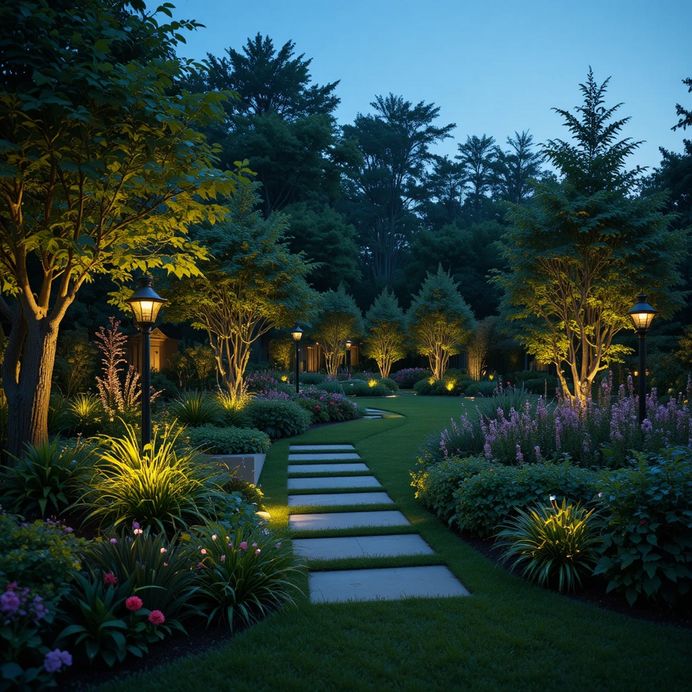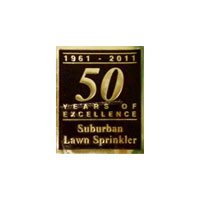
Outdoor lighting can transform a yard in ways that are often surprising, especially when you compare how it interacts with a mature landscape versus a newly planted one. Both types of landscapes benefit from good lighting, but they respond to it in very different ways. The height of the plants, the density of the foliage, and the depth of the overall design all influence how light behaves after dark. For Massachusetts homeowners who take pride in outdoor spaces, lighting is not just about visibility. It is about creating mood, accentuating natural beauty, and highlighting the unique character of the landscape as it grows and changes over time.
Why Mature Landscapes Respond So Well to Lighting
Older landscapes have a certain richness that younger yards simply cannot replicate. Tall trees, established shrubs, and layered garden beds create strong visual anchors, and outdoor lighting makes these features even more striking at night.
Using Height to Create Visual Impact
Large, mature trees immediately become focal points when lit correctly. Uplighting at the base of a tall tree can send a warm beam up the trunk and into the canopy, creating a beautiful vertical highlight. These taller elements give lighting designers the ability to create depth and drama. The eye naturally follows the light upward, making the landscape feel grand and inviting.
Shrubs and hedges that have fully grown in also create opportunities for gentle washes of light that soften the edges of the property and frame key areas like patios and walkways.
Shadows That Add Dimension and Texture
One of the most valuable characteristics of a mature landscape is the abundance of natural shadows it provides. Thick canopies, wide branches, and dense greenery create a soft interplay of light and darkness that gives the landscape a sense of character after sunset.
Well-placed lighting can take advantage of these natural shadows. For example:
- Branches can cast intricate patterns onto the lawn
- Large shrubs can break up light to create layers of contrast
- Stone walls and older hardscaping can take on enhanced texture when light grazes across them
These shadows create a sense of mystery and movement. The landscape feels alive rather than flat and washed out.
Highlighting Natural Texture
Older landscapes often come with textured elements that look especially attractive under lighting. Rough bark, winding branches, and established perennials all take on new depth at night. Soft lighting, placed low and angled properly, can draw attention to the details that homeowners might overlook during the day.
Layered Lighting Options
A mature landscape also gives you more vertical layers to work with. Tall trees, mid-sized shrubs, and low garden beds allow for combinations of uplights, downlights, and path lights that feel balanced and intentional. Because the plant material is full and layered, you can add multiple fixtures without creating glare or visual clutter. Instead, the light blends into the environment, creating a cohesive nighttime scene.
Lighting Newly Planted Landscapes: Subtlety and Future Planning
A new landscape may not yet have the height or density of an older one, but outdoor lighting still plays a crucial role. With young plantings, the key is thoughtful placement and a forward-looking strategy.
Keeping Lighting Proportional
In a newly planted yard, fixtures must match the scale of the plants. A powerful spotlight pointed at a small sapling rarely looks natural. Instead, smaller accent lights, gentle path lights, and soft washes work best. These provide structure and interest without overwhelming young shrubs or thin tree trunks.
This approach allows the landscape to feel polished while the plants are still establishing themselves.
Working With Limited Shadows
Because new plants do not create much shadow, lighting often shifts its focus toward hardscaped elements. Pathways, entry steps, patios, stonework, and architectural features offer reliable places to build visual interest. As the landscape matures, these lights can be adjusted or supplemented with new fixtures that highlight the growing greenery.
Planning for Growth
Perhaps the most important part of lighting a newly planted landscape is planning ahead. Plants grow quickly during the first few years. A fixture that illuminates a young tree perfectly today may be blocked by branches two years from now.
To prepare for this, lighting professionals:
- Leave extra wire slack underground for future adjustments
- Choose fixtures that allow for beam changes
- Avoid placing lights too close to young trunks
- Use flexible design layouts that can evolve as the landscape fills in
This ensures the lighting design remains functional and attractive as the plants gain height and density.
Defining Open Spaces
New landscapes often look open and airy, which can feel empty at night without the right lighting. Gentle downlighting, path lights, and low accent lights help define the space and give it structure. These features guide the eye and create inviting zones around the yard, making the new landscape feel complete even before the plants mature.
How Lighting Evolves Over Time
One of the most rewarding things about landscape lighting is that it grows along with the yard. What starts as a simple lighting plan during the early years can eventually develop into a rich, layered design as the plants mature.
Gradually Increasing Layers of Light
As trees grow taller, and shrubs get fuller, new lighting opportunities emerge. Uplighting can be added where it was not useful before, and existing lights can be redirected to highlight new features. This makes lighting a long-term investment that continues to improve the look of the property.
Adapting to Changing Shadows
Over time, shadows become deeper and more pronounced. Adjusting the placement and intensity of lights helps maintain balance and prevents overly dark areas as the canopy grows.
Preventing Obstructed Light
Branches may eventually block fixtures or change how light spreads. Regular maintenance and occasional repositioning keep the lighting design crisp and effective.
The Value of Professional Design for Both Garden Stages
Whether your landscape is brand new or decades old, good lighting makes a dramatic difference. Professional designers know how to work with height differences, shadow patterns, and long-term plant growth to create a lighting plan that stays beautiful as the landscape changes.
With the right design, your yard can evolve gracefully from a young garden into a fully mature landscape that shines after sunset. Contact Suburban Lawn Sprinkler at (508) 872-2727 today or visit us online for more information!








